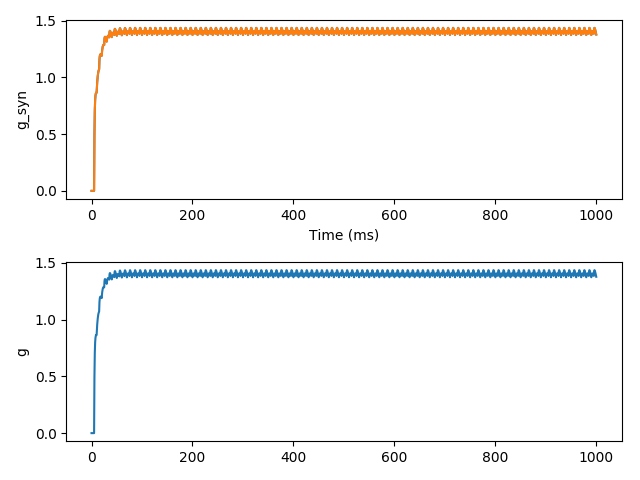Example: nonlinear
NMDA synapses.
from brian2 import *
a = 1 / (10*ms)
b = 1 / (10*ms)
c = 1 / (10*ms)
neuron_input = NeuronGroup(2, 'dv/dt = 1/(10*ms) : 1', threshold='v>1', reset='v = 0',
method='euler')
neurons = NeuronGroup(1, """dv/dt = (g-v)/(10*ms) : 1
g : 1""", method='exact')
S = Synapses(neuron_input, neurons, '''
dg_syn/dt = -a*g_syn+b*x*(1-g_syn) : 1 (clock-driven)
g_post = g_syn : 1 (summed)
dx/dt=-c*x : 1 (clock-driven)
w : 1 # synaptic weight
''', on_pre='x += w') # NMDA synapses
S.connect()
S.w = [1., 10.]
neuron_input.v = [0., 0.5]
M = StateMonitor(S, 'g',
# If not using standalone mode, this could also simply be
# record=True
record=np.arange(len(neuron_input)*len(neurons)))
Mn = StateMonitor(neurons, 'g', record=0)
run(1000*ms)
subplot(2, 1, 1)
plot(M.t/ms, M.g.T)
xlabel('Time (ms)')
ylabel('g_syn')
subplot(2, 1, 2)
plot(Mn.t/ms, Mn[0].g)
ylabel('Time (ms)')
ylabel('g')
tight_layout()
show()
